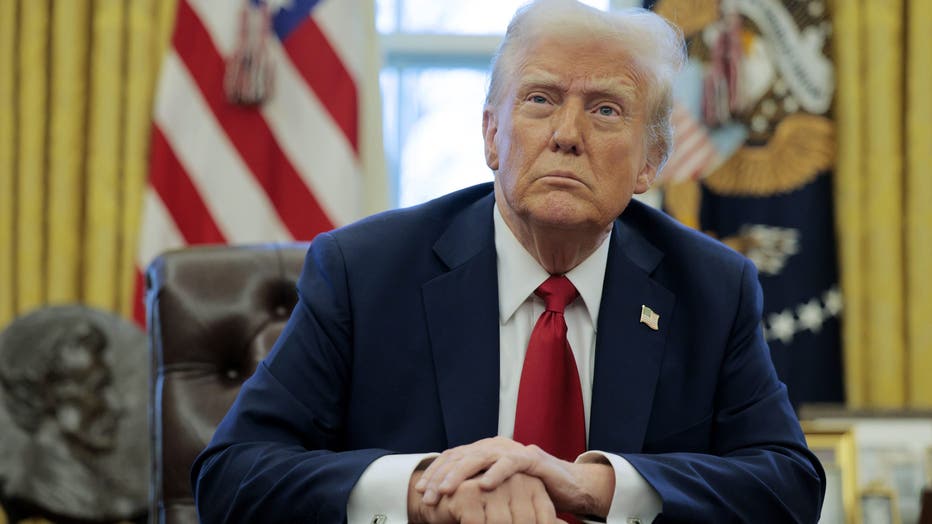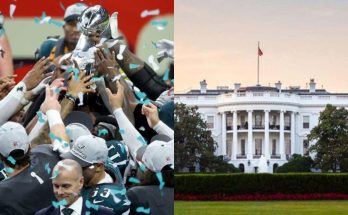Trump agrees pause Mexico tariffs
President Trump has agreed to pause the Mexico tariffs for a month. In exchange, Mexico will reinforce their border with 10,000 members of the National Guard to help with drug trafficking, Mexican President Claudia Sheinbaum said. Import taxes are still in place for Canada and China.
President Donald Trump on Monday held off on his tariff threats against Mexico and Canada for 30 days after the two U.S. neighbors agreed to boost border security efforts.
Here is the latest on Trump’s tariffs that were announced over the weekend, and that are expected to go into effect on Tuesday:
Mexico tariffs delayed
What they’re saying:
Mexican President Claudia Sheinbaum said Monday that after a conversation with U.S. President Donald Trump that the planned tariffs are on hold for a month, a statement confirmed by the White House.
“Mexico will reinforce the northern border with 10,000 members of the National Guard immediately, to stop drug trafficking from Mexico to the United States, in particular fentanyl,” Sheinbaum posted on X. “The United States commits to work to stop the trafficking of high powered weapons to Mexico.”
Canada tariffs delayed
What they’re saying:
Trump on Saturday had directed that 25% tariffs on most imports from the two American partners — and 10% on Canadian energy products — go into effect at midnight Tuesday. The two nations threatened retaliation of their own, raising the prospects of a broader regional trade war.
In a statement on X, Canadian Prime Minister Justin Trudeau said that on a call with Trump he pledged additional cooperation on border security.
“Proposed tariffs will be paused for at least 30 days while we work together,” Trudeau said.
Trump’s tariffs

FILE – U.S. President Donald Trump talks to reporters from the Resolute Desk after signing an executive order to appoint the deputy administrator of the Federal Aviation Administration in the Oval Office at the White House on January 30, 2025 in Washington, DC. Trump also signed a memorandum ordering an immediate assessment of aviation safety and ordering an elevation of what he called “competence” over “D.E.I.” (Photo by Chip Somodevilla/Getty Images)
The backstory:
Over the weekend, Trump declared an economic emergency in order to place duties of 10% on all imports from China and 25% on imports from Mexico and Canada.
Mexico and Canada ordered retaliatory tariffs, though Mexico is holding off on theirs for the moment as security and trade talks continue between the two countries.
The Ministry of Commerce in China said it would file a lawsuit with the World Trade Organization for the “wrongful practices of the U.S.” and take measures to safeguard its rights and interests.
Import taxes were still in place for Canada and China to begin on Tuesday.
Trump posted on social media that he spoke Monday morning with Canadian Prime Minister Justin Trudeau and would “be speaking to him again at 3:00 P.M.”
Trump has promised more import taxes to come.
RELATED: Trump tariffs on Canadian oil could impact these 3 US regions, gas analyst says
Dig deeper:
Trump has said he was enacting the tariffs to take greater action against illegal drugs.
He said the tariffs would lift if Canada and Mexico did more to crack down on illegal immigration and fentanyl smuggling, though there are no clear benchmarks.
Trump also said the U.S. can no longer run a trade imbalance with its two largest trade partners.
By the numbers:
Mexico is facing a 25% tariff, while Canada would be charged 25% on its imports to the United States and 10% on its energy products. China is facing a 10% additional tariff due to its role in the making and selling of fentanyl, the Trump White House said.


